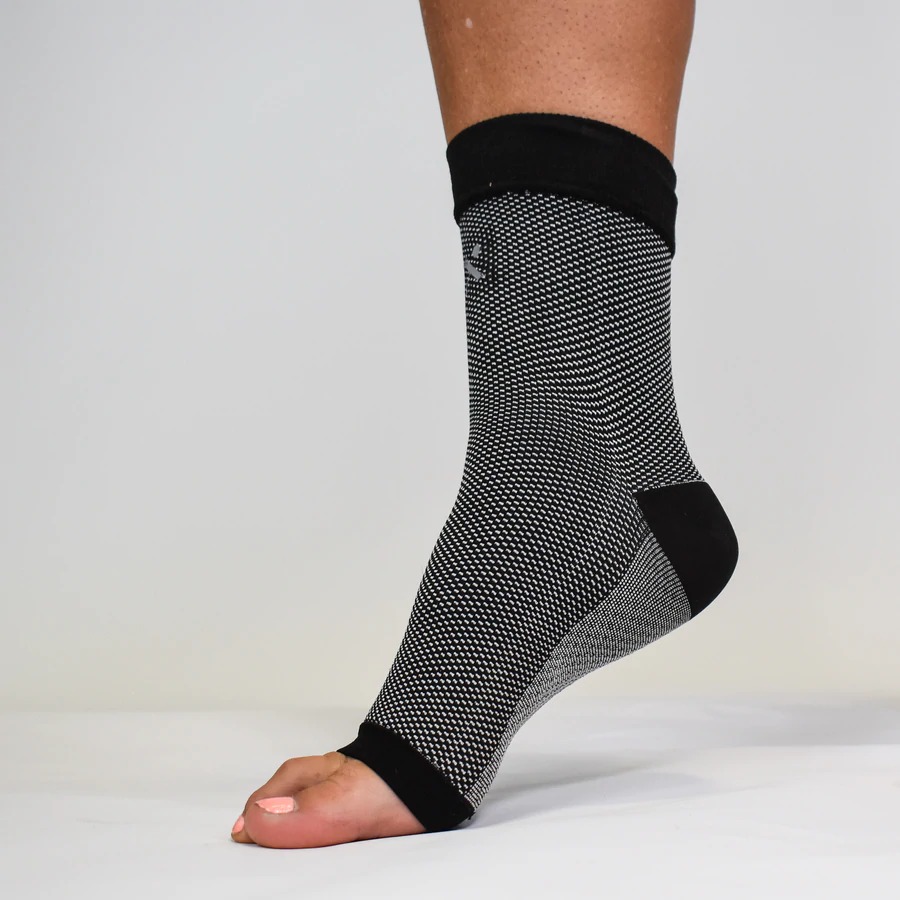How Long Can You Wear Compression Sleeves?
Whether you wear your compression sleeves to relieve pain, boost athletic performance, promote recovery, or prevent injury, you might be wondering: How long can I wear these things? Is it possible to have too much of a good thing?
The answer, of course, depends on a number of factors: What kind of compression sleeves are you wearing? What are your goals for wearing them? What kinds of activities are you doing while wearing them? Let’s dive in.
What are the different levels of compression?
Compression sleeves are made from a blend of nylon and spandex and are designed to provide different levels of compression for different purposes.
Compression is measured in millimeters of mercury (mmHg). You can experience the benefits of compression from 8-20 mmHg, which is considered non-medical grade compression. Compression sleeves with these mild levels of compression are great for relieving chronic pain and reducing stress on the body before, during, and after activity.
Others are designed with higher levels of compression, meant to be worn for shorter periods of time. Medical grade compression begins at 20 mmHg and goes up to 40+ mmHg. These highest levels of compression are typically only used for treating medical conditions like severe edema and lymphedema.
What are your goals for wearing compression sleeves?
Your goals for wearing compression sleeves will inform how long you wear them.
If you’re using compression sleeves to relieve chronic pain, you might feel best wearing them anytime you are using your affected area. For example, if you experience arthritis pain in your hands from daily activities, you might choose to wear a wrist compression sleeve when you are driving, typing at a computer, cooking, gardening, or doing anything else that might cause pain in your hands.
You might be using compression garments to boost performance or prevent injury during your workouts. If that’s the case, you might choose to wear compression sleeves before, during, and after activity.
Some people wear compression sleeves to protect areas they have injured or where they’ve had surgery. For example, if you have recently had surgery on your knee, you might wear compression sleeves anytime you’re walking or moving around to avoid accidentally overextending the knee and causing further injury.
Can you sleep in compression sleeves?
Most types of compression sleeves are designed to be worn when you are awake and moving around. The pressure from the compression sleeves fights gravity and supports your blood circulating throughout your body.
There are some situations in which light compression might be recommended while you sleep – such as after certain types of surgery. But typically, it’s not recommended to wear compression garments when you’re sleeping or lying down for long periods of time.
Here’s why: When you’re lying down for longer periods of time, your body doesn’t need as much help fighting gravity. In fact, applying too much pressure to certain parts of your body can be dangerous – for example, wearing medical-grade compression sleeves on your legs while sleeping could cut off circulation to your feet. Left unchanged, this could lead to serious complications.
When should I take off my compression sleeves?
Regularly wearing compression sleeves has many advantages, but it’s important to take them off from time to time to get the maximum benefits – such as when you’re sleeping, as we’ve discussed.
For the same reason, you’ll want to remove them if you plan on being sedentary/reclining for an extended period of time. You don’t need to wear compression sleeves when you’re reclining on the couch and watching a movie unless you’ve been instructed by your doctor to do so (such as after surgery).
You’ll also want to take your compression sleeves off from time to time so that you can wash them. Just like anything you wear on your body for extended periods of time, compression sleeves can harbor bacteria if you don’t wash them. If you often get sweaty while wearing your compression sleeves, you’ll want to wash them more often.
You should never wear compression sleeves on open wounds. If you have any signs of skin irritation from your compression sleeves, you will want to stop wearing them until that clears up.
How long can I wear my Nufabrx compression sleeves?
With light, non-medical grade compression (15-20 mmHG) and the pain-relieving benefits of capsaicin, Nufabrx HealthWear® compression garments are designed for extended use.
You can wear your Nufabrx compression sleeves for as long as it feels comfortable. Depending on your individual goals, you might choose to wear them as part of your daily routine, during and after exercise, or during specific types of activities, such as on a long flight.
Nufabrx HealthWear® sleeves are laundry safe and reusable. The infused medicine lasts for 15+ washes, with an estimated cumulative wear of 150+ hours of effective relief. After the pain relieving medicine is no longer active, your sleeve can still be worn for compressive support. Shop the Nufabrx HealthWear® collection here.







Leave a comment